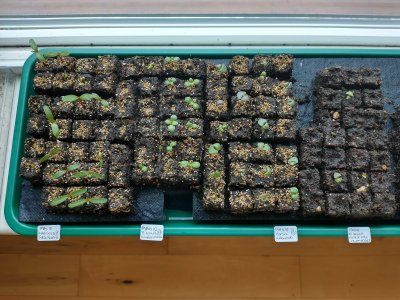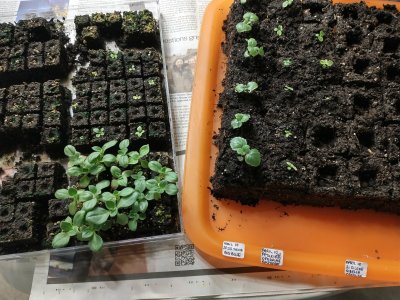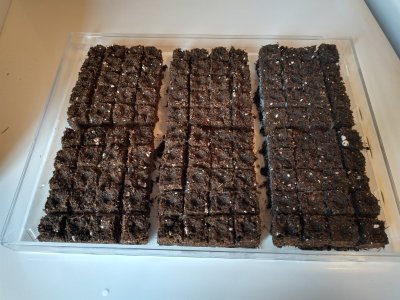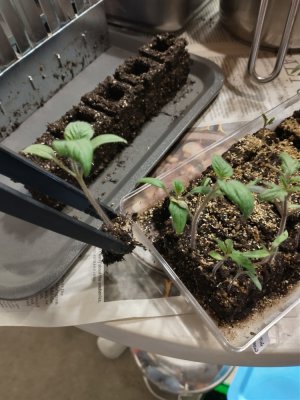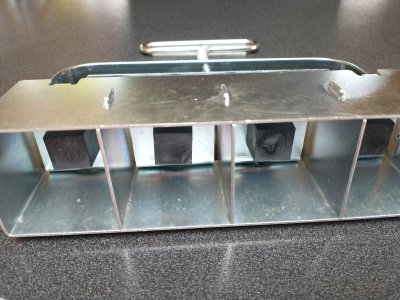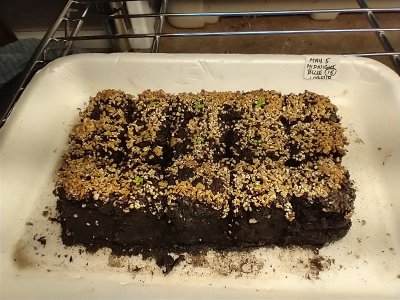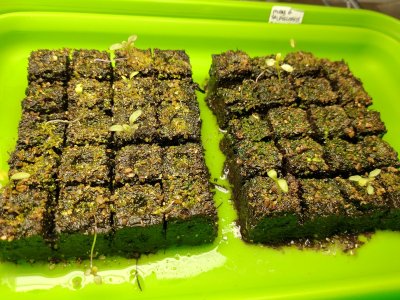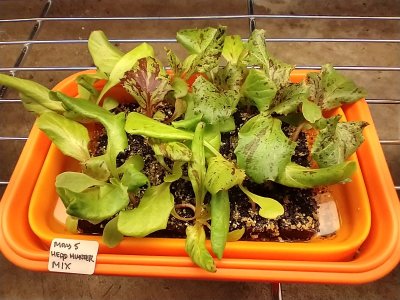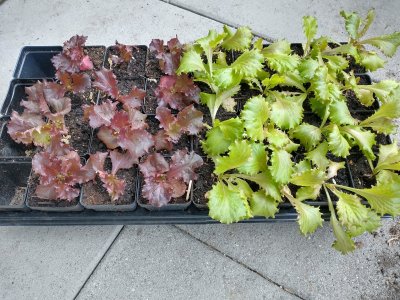Branching Out
Garden Addicted
This spring I've been using Ladbrooke soil blocking tools to create compressed cubes of moist soil for starting seeds, and it has been a great experience. With the mini soil blocker it's possible to make tiny but still uniform blocks that are about the size of a sugar cube. These are perfect for starting small seeds like lettuce, tomatoes, peppers, or zinnias with very little cost as such a small quantity of soil is required. Having said that a small sack of seed starting mix is not inexpensive at $9 or so for about 5lbs. I've tried using potting soil instead, but most brands are full of rocks, sticks, or even large chunks of wood so I have to sift the mix before I can use it. This is time consuming, and I am not super impressed by paying for significant quantities of rocks and bark in a bag sold as potting soil .
Not only that, but once the pebbles and bark are removed what you are left with looks suspiciously like peat moss with a handful of perlite thrown in. This got me wondering if I could make mini soil blocks using only sifted peat moss. Would they hold together? Would they retain too much moisture and rot the seeds? It seemed worth a go to find out, so on May 10th I gave it a try and started seeds of marigold Strawberry Blonde (loved that one when I grew it last year), zinnia Zahara Double Salmon, and basil Aromatto using only sifted peat moss and some dry organic fertilizer. It has been 12 days, and so far the results look promising. The photo on the left shows 14/25 marigolds, 10/27 zinnias, 20/28 Aromatto basil sprouts, and lastly some blocks made with a seed starting mix on the same day with 5/25 salvias popping up. I will definitely try peat moss blocks again to see if I can achieve consistent results with this method, and I may try increasing the ratio of peat in my large blocks as well. The large blocks use a lot more soil, but they are necessary for bumping up the seedlings after 2-3 weeks as shown in the photo on the right.
Not only that, but once the pebbles and bark are removed what you are left with looks suspiciously like peat moss with a handful of perlite thrown in. This got me wondering if I could make mini soil blocks using only sifted peat moss. Would they hold together? Would they retain too much moisture and rot the seeds? It seemed worth a go to find out, so on May 10th I gave it a try and started seeds of marigold Strawberry Blonde (loved that one when I grew it last year), zinnia Zahara Double Salmon, and basil Aromatto using only sifted peat moss and some dry organic fertilizer. It has been 12 days, and so far the results look promising. The photo on the left shows 14/25 marigolds, 10/27 zinnias, 20/28 Aromatto basil sprouts, and lastly some blocks made with a seed starting mix on the same day with 5/25 salvias popping up. I will definitely try peat moss blocks again to see if I can achieve consistent results with this method, and I may try increasing the ratio of peat in my large blocks as well. The large blocks use a lot more soil, but they are necessary for bumping up the seedlings after 2-3 weeks as shown in the photo on the right.
Attachments
Last edited:

